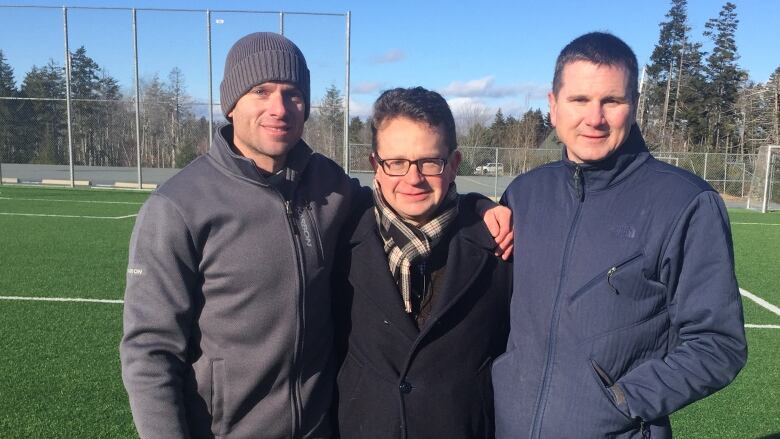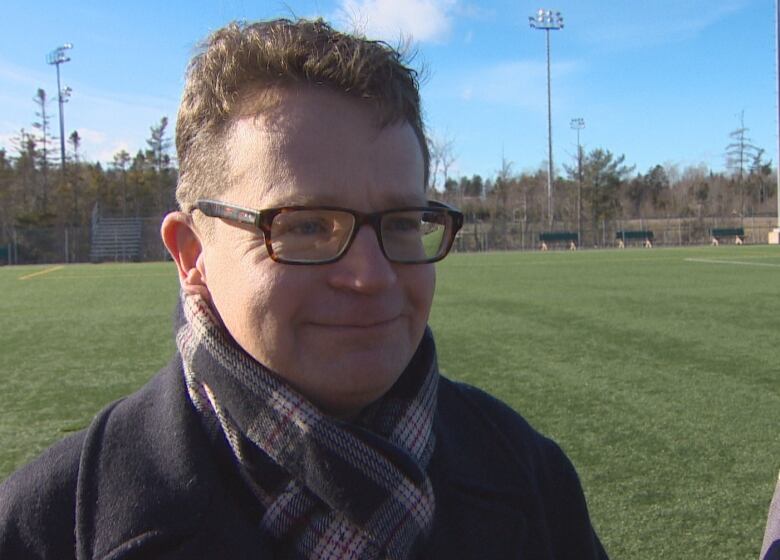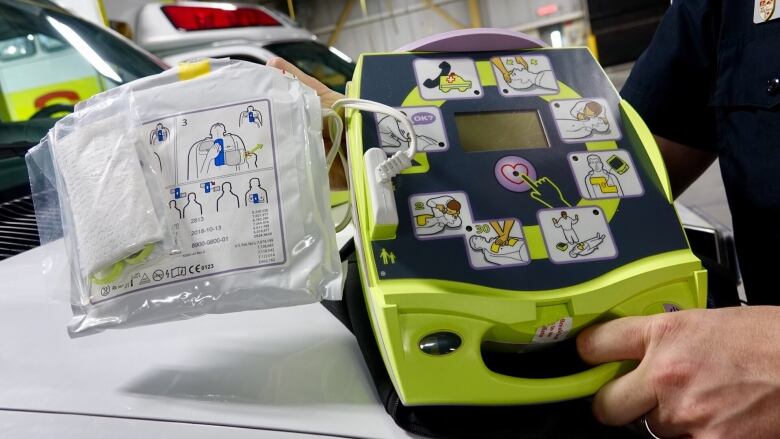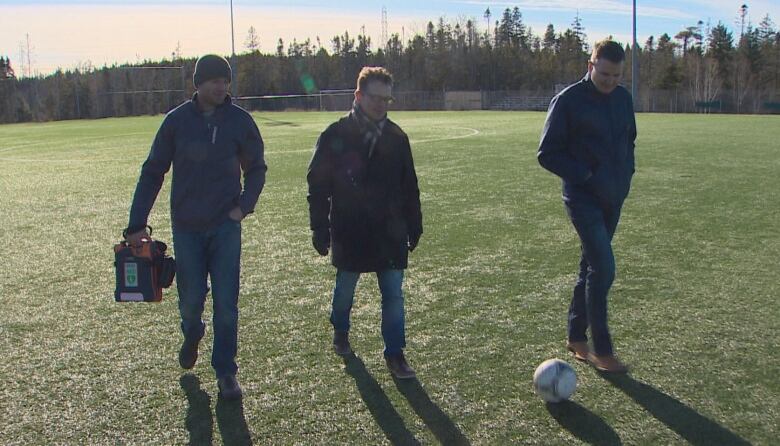Marc Butler nearly died as a defibrillator lay nearby. It's one of 100s still not registered
N.S. rolls out program to alert people with AEDs of a nearby cardiac arrest, but many still not listed

Marc Butler nearly died on a soccer fieldas his friends pumped on his chest and players pounded on the locked doors of a nearby recreation centre, trying to reach the defibrillator inside.
"We were 20 minutes in, with no pulse," remembers Fraser Allen, who started performing CPR on his friend "within 10 seconds" of him going into cardiac arrest in Upper Sackville, N.S., in June 2016.
"One of the younger kids said, 'Do you think he's going to be OK?' And I said boys, I think he's gone.' Because at that point he looked like he was running out of time," said Brad Thompson, who alternated chest compressions with Allen until they bothlost feeling in theirarms.
Paramedics and firefighters finally arrived with automated externaldefibrillators of their own. It took several shocks of the life-saving device, but itrestored Butler's heart to a normal rhythm.

As he recovered in hospital, Butler, a health-care managerin his mid-40s, learned something that still frustrates him tothis day: A defibrillatorwas located in the Weir Field Recreation Facility,just 200 metres away from where he collapsed.
"It worked out for me, but it could've easily gone the other way," he said.
It's just that kind of disconnect the province is trying to fix. It has rolledout a new system that allows medicaldispatchers, in the case of a cardiac arrest call,to send an alert to people registered to defibrillators within 1.2 kilometres, giving themthe chance to quickly bring one to the scene.
Eventually, those dispatchers will also be able to tell 911 callers where the nearest defibrillators are located.
Those who suffer cardiac arrest, which in Butler's case was caused by a heart attack brought on by ablocked artery, havea narrow window of survival. After 12 minutes, the survival rate for adults is less than five per cent, according to the Heart and Stroke Foundation.
ACBCNews investigation this fall foundmany defibrillators in Atlantic Canada are not registered with provincial authorities, and emergency dispatchers in Nova Scotia don't know where they are located, making it impossible to direct bystanders to the nearest one.
Other parts of the country already use technology that allows dispatchers to direct callers to nearby devices. Some areas even have maps showinglocations.
In Nova Scotia, it took a freedom of information request forCBCNews to obtain the locations,as of Oct. 19, 2017, of registered automated external defibrillators (AEDs) in the province.
Map of AEDs in Nova Scotia as of Oct. 19
Theprovincecautioned thatinformation in the registry, which was used to create this map, is currently being confirmed and updated. Since it's submitted by third parties, some of it may be incomplete, incorrect or out of date.
TheWeir Field defibrillator, which is owned by the Halifax Regional Municipality, is notlisted.
Emergency Health Services started using its new alert system inOctober and since then, the number of devices registered in Nova Scotia has jumped by 36 per cent to 325, according to MikeJanczyszyn, who co-ordinates the provincial registry.
Butheestimates there could be between 1,000 and 1,500 across the province.Some devices on the registry are also not considered publicly accessible,Janczyszyn said.
"It's kind of a culture shift that we need to take in as NovaScotians," he said."When people register, we encourage not being locked away, behind office doors that might be locked, more public locations, longer hours of operation."

The new EHSnotification software,AEDLink,allows 50 people or more to be listed with a single defibrillator, increasing the chances one of the them will be nearby if a text alert is sent out.
So far, there have beentwo cases where responders were notified, Janczyszynsaid. In one, no one was able to go to the scene. In another, someone arrived with a defibrillator at the same time as paramedics.
"We need to get more AEDs in our system. More responders to register as well. It's at that point the system is going to be very efficient and more worthwhile for people because we'll be able to get AEDs to people quicker," he said.

Another part of the program will be software updates to allow emergency dispatchers at EHS's provincial communications centre to direct 911 callers to the nearest defibrillator.
Currently, the only locations built into the dispatch system are for devices onNova Scotia Community College campuses.
"The more of these that are online, the better off we'll be able to notify people of how to access those devices,"said Jeff Fraser, director of provincial operations forEHS.
Janczyszynsaid it's still unclear when dispatchers will be able to start accessing information about defibrillatorlocations as the software is still in a testing stage,but he hopes it will happen by the end of 2018.

Halifax saidthe recreation centre near Weir Field, where Butler collapsed, is run by volunteers, but the defibrillator thereis inspected and maintained by the municipality.
"That community centre is not always open when there's field bookings," said NickRitcey, who speaks for the municipality.
"In order to have one available for people who are using the field, there has to be a way to make it accessible at all times. They municipality is working with that board."
Since his heart attack, Butler has been in touch with Soccer Nova Scotia about ensuring there are devices available at all outdoor fields.
He calls the teammates who saved his life "heroes." He,Thompson and Allen think about the close call nearly every day. Any time one of them walks in a gym or rink, they are on the lookout for a defibrillator.
Butler's whole family has been trained in CPR and when Thompson hosted a soccer tournament this past summerfor friends, he made sure he had a portable defibrillator on hand, just in case.
Butler said he never expected to have a heart attack at his age, and hopes people and organizations with defibrillators make sure it's easy to find them in a crisis.
"That's why people buy them in the first place, for an emergency. Make sure they're registered," he said.














_(720p).jpg)


 OFFICIAL HD MUSIC VIDEO.jpg)
.jpg)



























































































